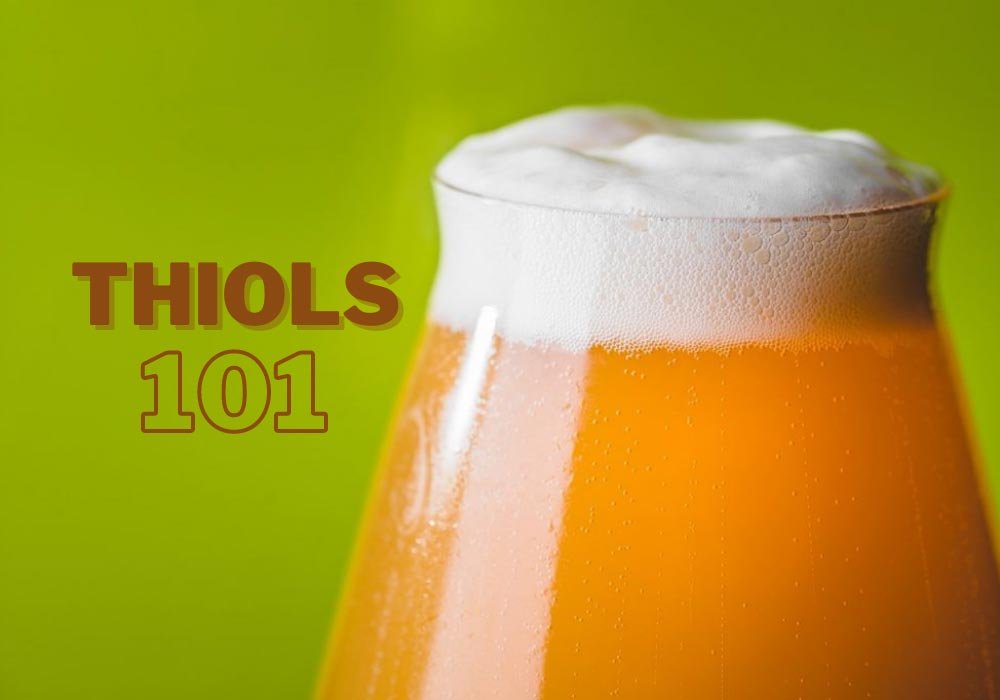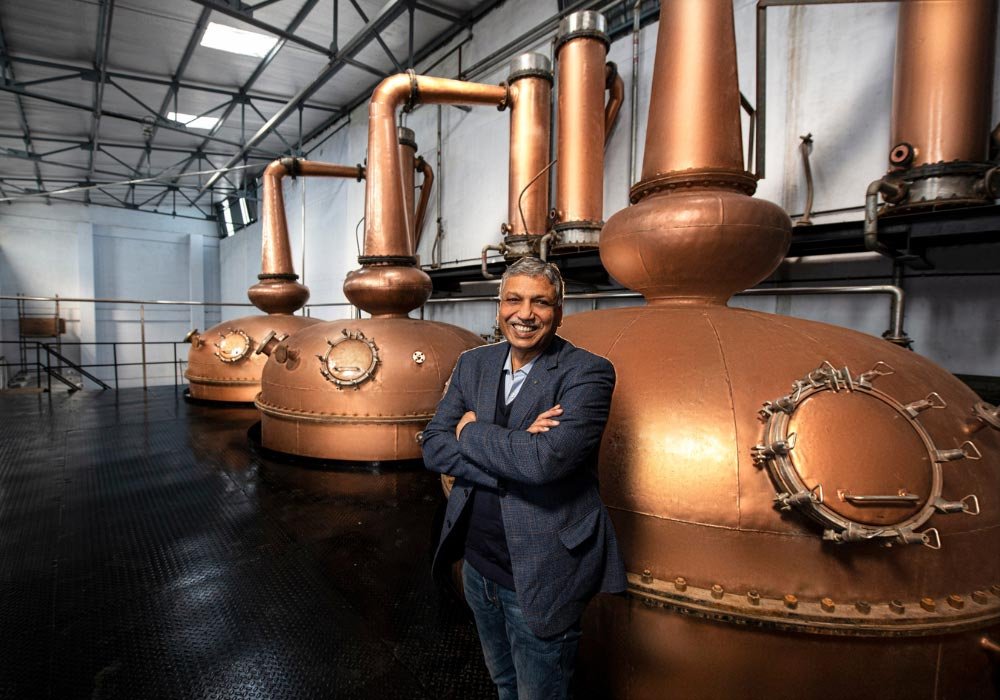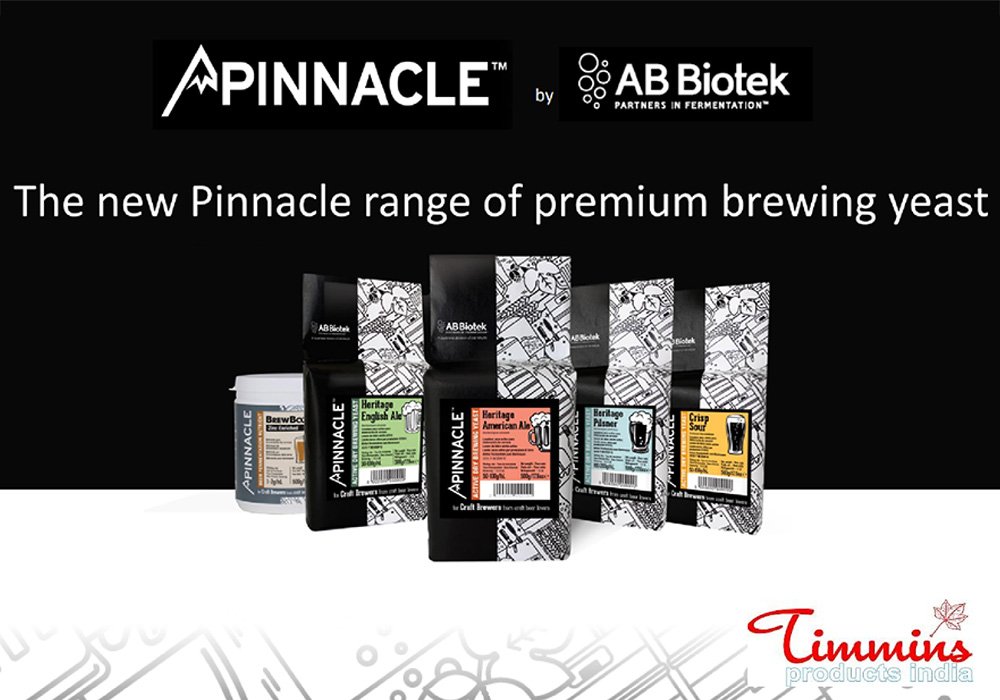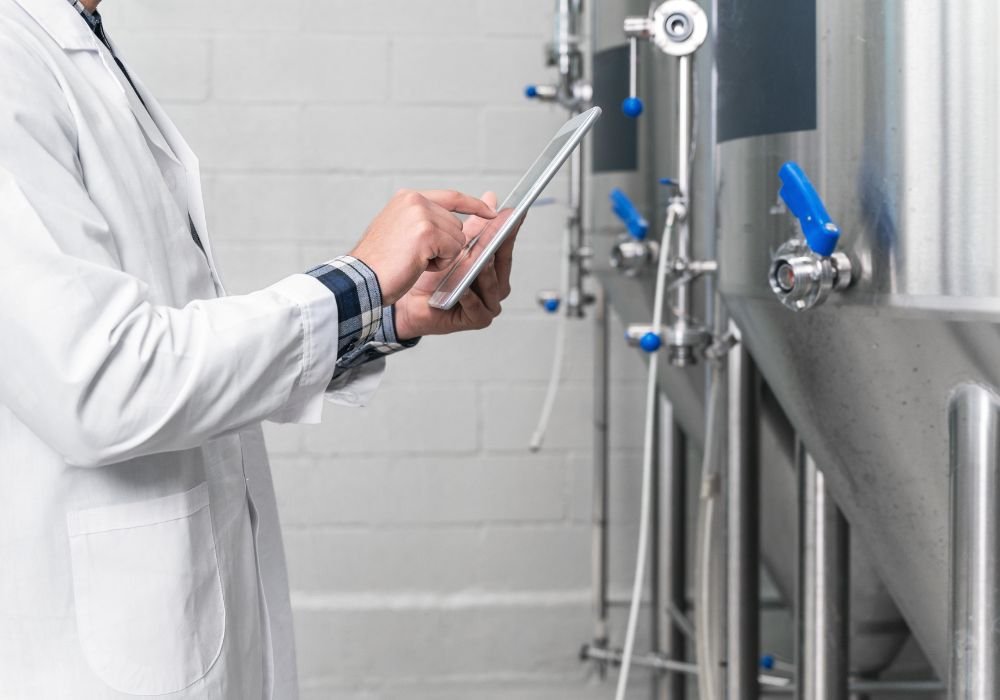
Hop forward beers such as Hazy IPAs are becoming increasingly popular – courtesy of pleasant fruity aromas that partially stem from compounds called thiols. They are one of the most lesser-understood flavor compounds of beer. Off late, brewers have been looking to produce more flavorful and juicy pale ales and an accurate way to get precursors from the ingredients. In this article, let’s look at a brief rundown of the origins, descriptors, and the significance of thiols.
What are thiols?
They are a family of sulfur-containing aroma compounds naturally found in hops, either as free aroma-active volatiles or as non-aroma-active (i.e. non-volatile) precursors. They represent only 1% of the total hop oil composition and are categorized as the sulfur fraction. Despite their low concentrations, thiols have very low sensory detection thresholds, meaning they are perceived at exceptionally low concentrations.
There are three types of aroma-active thiols. 4MMP (4-mercapto-4-methyl-pentan-2-one), 3MH (3-mercaptohexanol) and 3MHA (3-mercaptohexyl acetate) are often perceived as black currant, citrus/grapefruit, passionfruit & guava respectively. Aroma active thiols are also known as volatile thiols which are also found in a variety of tropical fruits, wine grapes and of course, hops.
[caption id="attachment_27706" align="aligncenter" width="1000"] Southern Hemisphere hops are known to be the highest in free thiols[/caption]
Southern Hemisphere hops are known to be the highest in free thiols[/caption]
Thiol compounds exist in two forms. One is a free form and the other is in a precursor form. Free form thiols are volatile but highly aromatic whereas precursor forms, also known as bound thiols, are non-aromatic. As the name suggests, bound thiols are derived from precursors such as malt, hops and other ingredients. While Southern Hemisphere hops appear to be the highest in free thiols, there is still much research and discovery yet to be done. Malted barley is also a great source of precursors. These bound precursors are a stockpile of aroma potential with a yeast capable of biotransforming them to liberate volatile and aromatic thiol compounds via a β – lyase activity.
[caption id="attachment_27705" align="aligncenter" width="1000"] Barley is a great source of precursors[/caption]
Barley is a great source of precursors[/caption]
Analyzing thiols is often hard because of their low concentrations. The standards and instrumentation that are needed to measure them are very expensive, and few laboratories have the equipment that is needed. In summary, thiols are a fascinating group of aroma compounds that should be further explored in brewing and brewers are always pushing boundaries in terms of new recipes and ingredients, looking for better quality beers and tropical-like flavors to attract customers. A greater understanding of hop biotransformation, thiols and β-lyase enzymes will certainly be a major contributor to brewing trends in the years to come.













